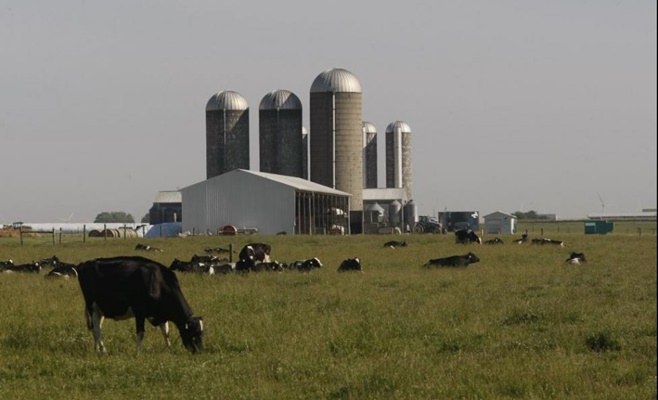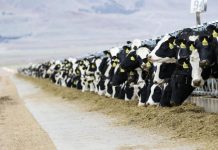
EVANSVILLE, Ind., July 24 (UPI) — The number of dairy cows in the United States dropped by roughly 100,000 animals in the last year, as low milk prices continue to drive American dairy farms out of business.
Between July 2018 and July 2019, the U.S. dairy herd shrank to 9.3 million animals from 9.4 million, according to the latest count by the U.S. Department of Agriculture. In 2018, some 2,500 dairies went out of business, according to the agency.
“A lot of my friends and neighbors have exited the business,” said Jim Burdett, the owner of a small, family-owned dairy farm near Mercersburg, Pa. “We’re a dying breed, the small, family run operation.”
Burdette’s farm is struggling to stay afloat, he said.
Milk prices have been low since 2015 — so low that the average U.S. dairyman has been losing money every year for the last four years, said Jackie Boerman, an assistant professor of animal sciences at Purdue University, who specializes in the dairy industry.
“What happened was that 2014 was a record year for dairy,” said Alan Bjerga, a spokesman for the National Milk Producers Federation. “And, whenever you have a really good year and prices increase, farmers respond by increasing production.”
In dairy farming, one of the ways that is accomplished is by adding cows, and that is exactly what farmers did, Bjerga said. Between 2014 and 2017, the number of dairy cows in the United States increased by about 150,000 animals, according to the USDA. (The agency did not survey the herd in 2016 because of budget constraints.)
Farmers during that time also found ways to increase the productivity of their existing animals by improving the health of the herds, Boerman said.
The result was a flood of milk hitting the market, and that sent prices crashing.
“We just had too much milk on the market,” Boerman said. “We had more milk production than we had demand for it. We needed to reduce our cow numbers to get the supply in line with the current demand.”
The dairy farm closures contributed to the decline. When a farm ceases operations, it sells the herd. Some of the animals are purchased by other farms to continue producing milk, but many of them end up sold for beef, Boerman said.
But dairy farm closures is not the only factor. Many farms that continue operations also are reducing their number of cows.
The farms routinely sell — or cull — dairy cows from their herds once the animals stop reliably producing milk, either due to age or some kind of health issue.
Farmers keep dairy cows about five years. The cows produce milk for the last three of them. The retired cows are either sent to slaughter houses to be butchered into ground beef, or rendering facilities to become pet food, depending on their age and condition.
But with milk prices so low, farmers had some incentive to cull more of their animals, especially when beef prices were high, Boerman said. They have also stopped replacing as many of their animals after culling, Bjerga said.
As the herd size continues to decline, milk prices are inching back up. In January, farmers were receiving a little more than $15 per 100 pounds of milk, according to the USDA. By July, the price rose to over $17.
Consumer prices are following suit, with the average price per gallon of whole milk topping $3 for the first time since 2017, according to the Bureau of Labor Statistics.
“We’re seeing the first signs of genuine improvement for dairy farms’ finances,” Bjerga said. “It’s taken a long time for the market to move in the right direction, but there is hope.”



